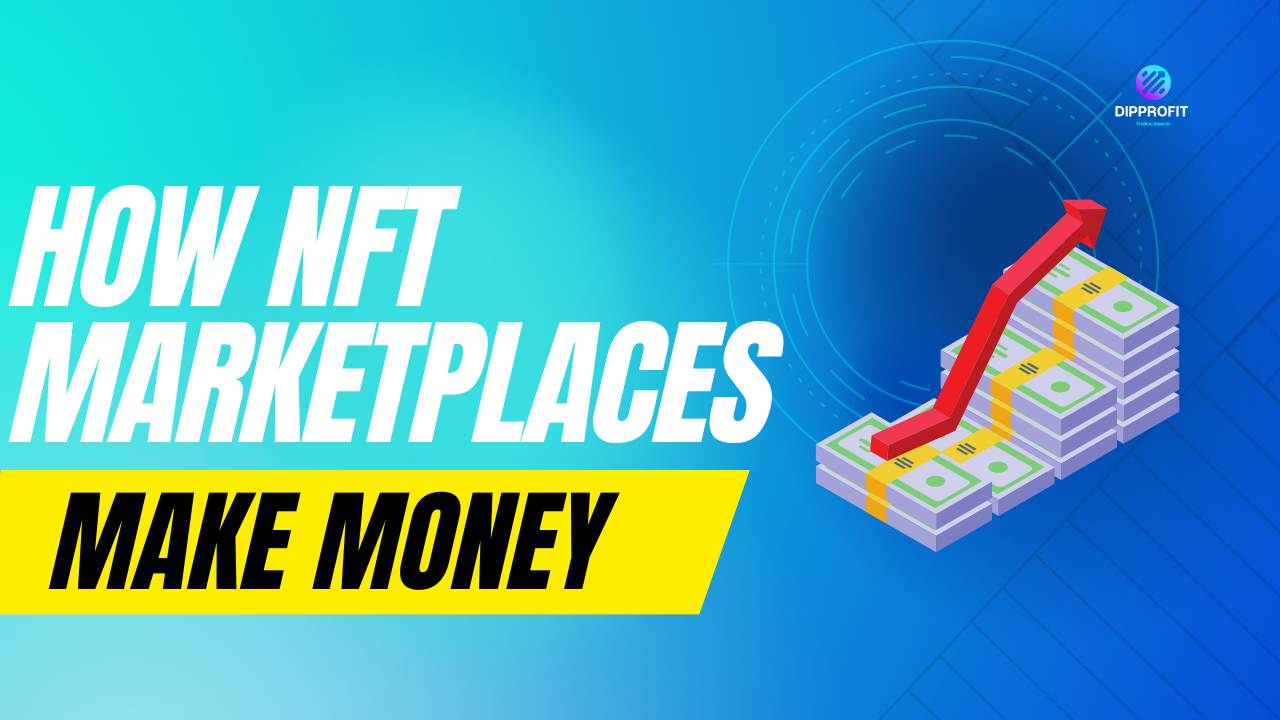
How NFT Marketplaces Make Money
What is a Marketplace?
But with NFTs, the marketplace is a special website where people can buy and sell their digital collectibles, like a physical mall for instance.

In this case, people go to these malls to pick up different specific items for themselves by exchanging the goods for an amount.
In an online marketplace, it works the same way, but with little differences.
Here’s a short definition of it:
A marketplace is a special kind of website or platform where people can buy and sell things. It’s like a big store where you can find all sorts of items, but instead of going to a physical location, you can access it on your computer or smartphone.
In a marketplace, you can browse through different products or services, compare prices, and choose what you want to buy. It’s a convenient place where buyers and sellers come together to make transactions and find what they’re looking for.
See also: Top 6 Polygon NFT Marketplace for Crypto Art and Collectibles!
Why Do People Buy NFTs?
People buy NFTs for many reasons. Some people think they’re super cool and want to collect them, just like collecting trading cards or stickers.
Others buy NFTs because they believe the value of the digital collectible will go up in the future, just like how the price of crypto can become high over a period of time due to different factors.
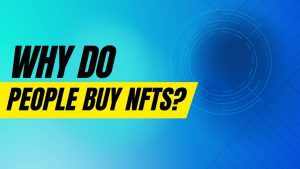
Just like some people collect stamps or action figures, collecting NFTs is a hobby for many. They find joy in owning unique digital items and building their own virtual collections.
Also, NFTs are often associated with specific communities or projects. By owning an NFT, people can become part of these communities and gain access to exclusive events, experiences, or perks.
Some people also buy NFTs because they offer a way to prove ownership of digital assets. In the past, it was difficult to prove who owned a digital artwork or a virtual item, but with the blockchain, all records are kept without any intervention.
Finally, NFTs provide a way for artists, musicians, and creators to directly sell their work to fans and supporters. By buying an NFT as a fan or a supporter of a particular group or person, people can show their appreciation for the artist’s talent and help them earn a living.
See also: The Truth On How Web3 Companies Make Money
How Do NFT Marketplaces Make Money?
Now, let’s get to the exciting part. How do these NFT marketplaces make money?
Well, there are a few ways they do it, and I’ll explain them to you, step by step.
Fees and Commissions

When someone buys or sells an NFT on a marketplace, the marketplace charges a small fee or commission.
It’s just like when you buy something from a store, and they add a little extra money to the price. All these extra fees help the marketplace make some money by providing the platform for maintenance and other needed benefits and upgrades.
Let’s say you have a shiny robot NFT that you want to sell.
When someone comes along and wants to buy it, the NFT marketplace will take a small percentage of the sale price as their fee. For example, if your shiny robot NFT sells for $100, the marketplace might take a 10% fee, which would be $10. So, you would receive $90 from the sale, and the marketplace would keep the $10 as their commission.
These little fees help NFT marketplaces cover their expenses, and continue providing services to artists and collectors.
Minting and Listing Fees
Well, some people make their own NFTs too! When they want to put their NFTs up for sale on a marketplace, they need to pay a small fee to the marketplace to do that. It’s kind of like paying rent to display their artwork in the store.
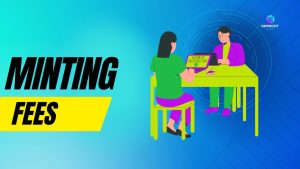
When an artist or creator wants to sell their own NFT on a marketplace, they need to go through a process called minting. Minting is creating a digital certificate of authenticity for the NFT.
But here’s the thing: to mint their NFT on the marketplace, the artist needs to pay a fee
The marketplace charges this fee for the minting process, which includes verifying the authenticity and uniqueness of the NFT and once minted, the artist can list it on the marketplace for potential buyers to see.
See also: How to Submit NFT Drop in 8 Steps
Gas Fees
Now, gas fees might sound a bit funny, but let me explain.
Most NFTs are created and exist on a special computer network called Ethereum. When people want to do something with NFTs on Ethereum, like buying or selling them, they need to pay a fee called a gas fee.
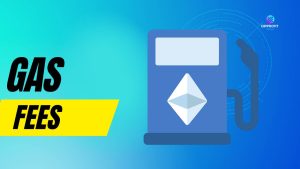
For example, let’s say you want to buy a cute digital pet NFT for your collection. When you make the purchase, you’ll have to pay a gas fee to complete the transaction on the Ethereum network.
The marketplace will then receive a small portion of that gas fee as a way to generate revenue.
So, next time you see a gas fee when buying or selling an NFT, remember that a part of it goes to the marketplace that helps bring together artists and collectors together.
Auctions and Bidding
Have you ever played a game where you bid or take turns to get something you really want?
Well, in some NFT marketplaces, people can bid on NFTs.
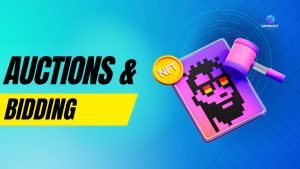
In some NFT marketplaces, instead of directly buying an NFT at a fixed price, people can participate in auctions to compete and win it.
Now, when people participate in these auctions and place their bids, the marketplace can make money in a couple of ways like Listing and Transaction fees depending on which marketplace it’s being hosted.
For example, imagine there’s a rare NFT of a magical old painting by a famous painter up for auction.
People who really want to own it would start bidding, offering higher and higher amounts of money. As the bids increase, the excitement grows, and the marketplace benefits from the listing fee and the transaction fee once the auction concludes
Secondary Sales and Royalties
Remember how we talked about the value of NFTs going up? Well, when someone sells an NFT to another person, and that person sells it again to someone else, the original creator of the NFT can get a small percentage of that sale.

It’s like getting a little bit of money every time someone sells your cool robot to someone else.
Here’s how it works:
- Secondary Sales: When someone sells an NFT they previously bought on the marketplace, the marketplace can charge a fee or commission on that secondary sale. For example, if an NFT is sold for $1000 in a secondary sale, the marketplace might take a small percentage, let’s say 10% ($100), as their fee.
- Royalties: It might also occur that some marketplaces allow for royalties for NFTs listed. This means that whenever an NFT is resold in the future, a percentage of the sale price goes to the original creator of the NFT. So, if an artist receives a 10% royalty and their NFT is resold for $2000, the artist would earn $200 as their royalty.
It’s a very simple way to reward artists for their creativity and also give them support for their work.
Special Features and Upgrades
Some NFT marketplaces make money by offering special features or upgrades for NFTs. For example, they might allow you to customize your digital collectibles or give you special access to events or experiences as their utility.

To get these cool extras, people often have to pay a small fee to the marketplace.
All these little fees contribute to the marketplace’s revenue and help support the development of new and exciting features that make their services even more enjoyable and unique.
See also: Utility NFTs Meaning and their Use Cases
Partnerships and Sponsorships
Sometimes, NFT marketplaces make more money by teaming up with other companies or artists to create special collections or events.

These partnerships and sponsorships which are sometimes held in the metaverse help both parties make money because they get paid for working together and bringing cool stuff to their platform.
When marketplaces join hands with talented artists or collaborate with exciting brands, it’s a win-win situation for everyone involved.
The marketplace gains recognition, the artists get a wider audience for their NFTs, and we, the collectors, get access to exclusive and extraordinary creations.
See also: 7 Best NFT Marketplaces to Buy and Sell in 2023
Is It Profitable for NFT Marketplaces?
You might be wondering if all these ways of making money are profitable for NFT marketplaces. Well, it depends on a lot of things. Some marketplaces are really popular, and they have lots of people buying and selling NFTs every day.
These marketplaces can make a good amount of money. But smaller marketplaces might find it a bit harder to make a lot of profit.
Some Popular NFT Marketplaces
If you want to get started with NFTs, it’s pretty easy! You just need a computer or a smartphone and an internet connection. There are many different NFT marketplaces out there, so you can choose the one that looks the most fun to you.
Some include:
OpenSea

OpenSea, an American NFT marketplace headquartered in New York City, is a hub for all things NFTs. Founded by Devin Finzer and Alex Atallah back in 2017, OpenSea provides an online platform where people can buy and sell non-fungible tokens in a variety of ways.
site: opensea.io
Nifty Gateway
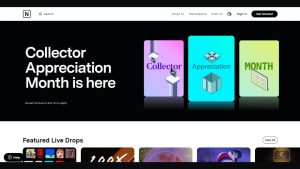
Nifty Gateway is a fantastic online auction platform that focuses on digital art and non-fungible tokens (NFTs). It was founded by Duncan and Griffin Cock Foster and has garnered attention in the NFT community. In fact, it has even caught the eye of the Winklevoss twins, who acquired the platform.
What makes Nifty Gateway even more exciting is its association with renowned NFT artists.
It has been a hub for high-profile NFT drops by well-known artists such as Beeple, Pak, Refik Anadol, and many others
site: niftygateway.com
Rarible

Rarible is a remarkable platform that operates on the Ethereum blockchain and offers an exciting opportunity for artists and creators in the digital world. It’s all about the creation, sale, and ownership of unique digital works of art using something called non-fungible tokens (NFTs).
site: rarible.com
Blur
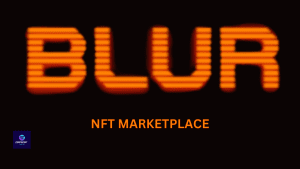
Blur is an exciting NFT marketplace that was launched in October 2022 with a specific focus on meeting the needs of professional NFT traders. The team behind Blur.io has successfully raised an impressive $14 million from renowned investors and experienced NFT traders. Their mission is to empower the NFT trading community and create a platform that caters to the unique requirements of traders.
site: blur.io
See also: Top 4 Avax NFT MarketPlaces to Trade in 2023
Summary
Wow, we learned so much about NFT marketplaces and how they make money!
We talked about NFTs, marketplaces, and all the different ways they can earn some money. Remember, marketplaces make money through fees, auctions, special features, and even partnerships.
We also discovered that NFTs are unique digital assets that can be bought, sold, and owned using blockchain technology. Marketplaces, such as OpenSea, Nifty Gateway, Rarible, and Blur, play a crucial role in facilitating these transactions.
Now that we understand how NFT marketplaces make money, let’s continue exploring the fascinating world of NFTs and discover the endless possibilities they offer.